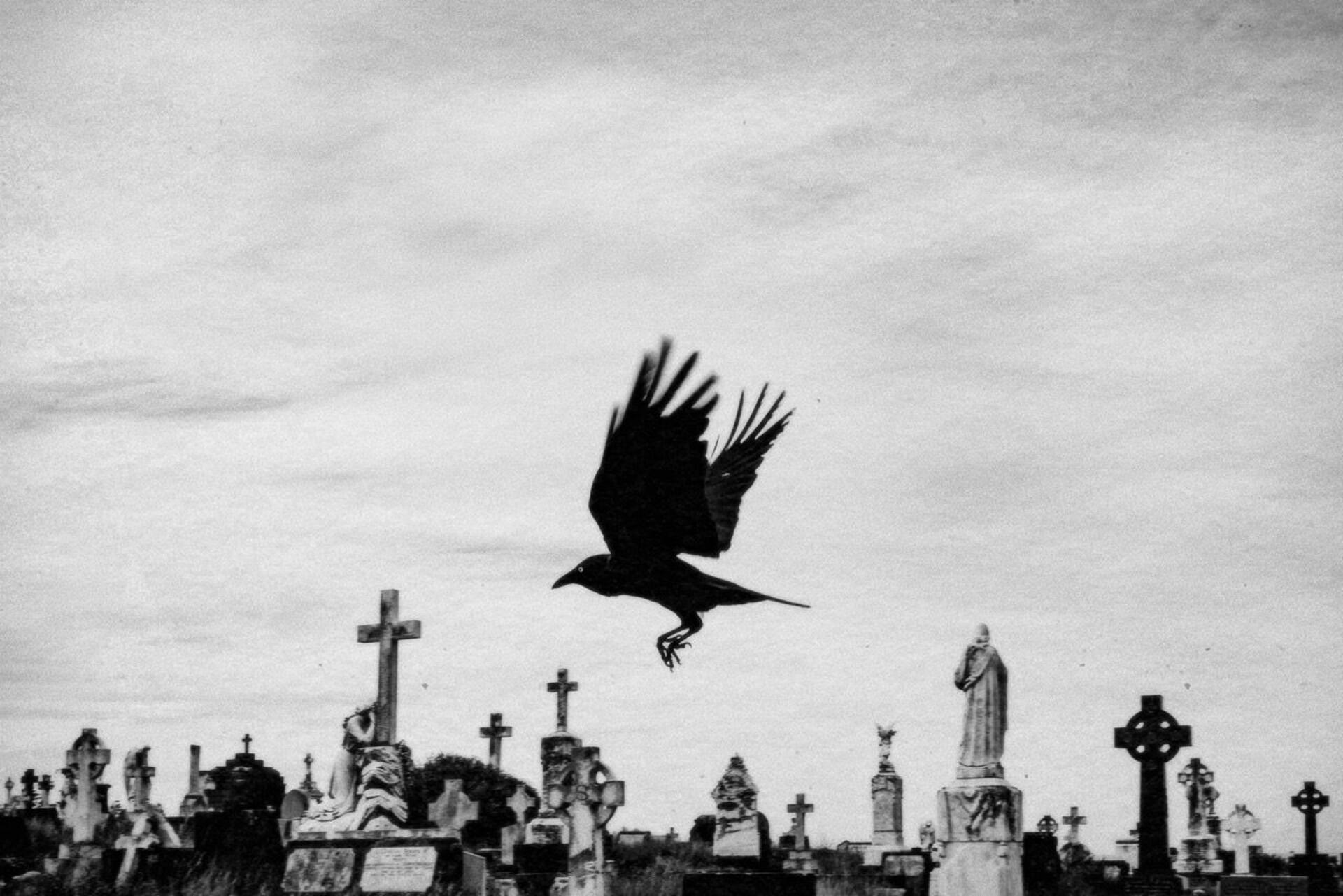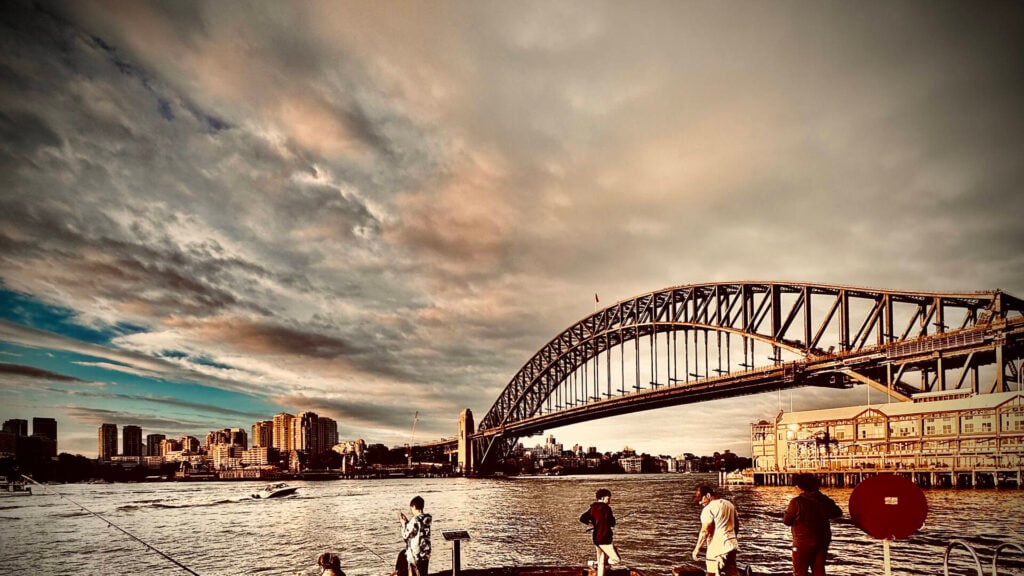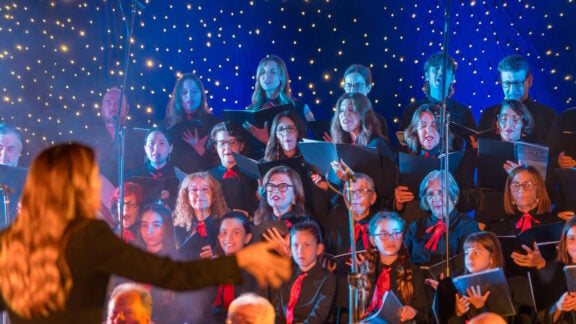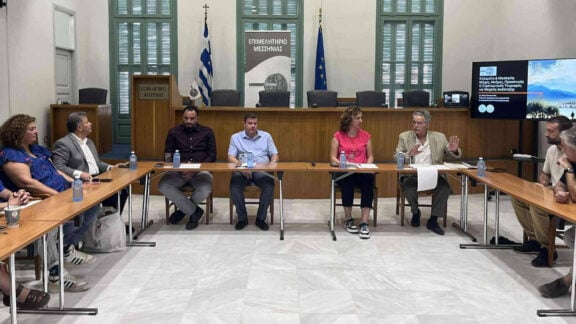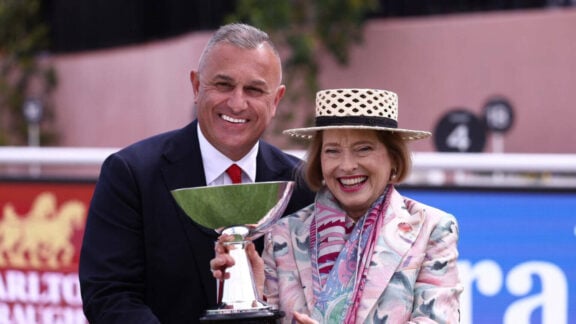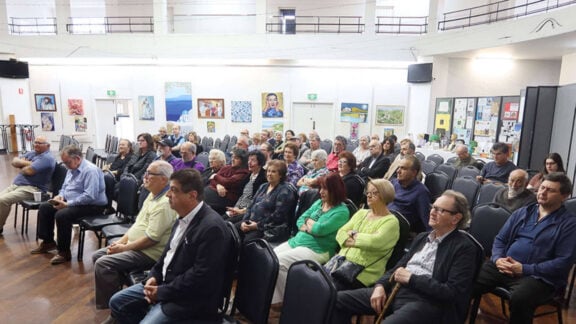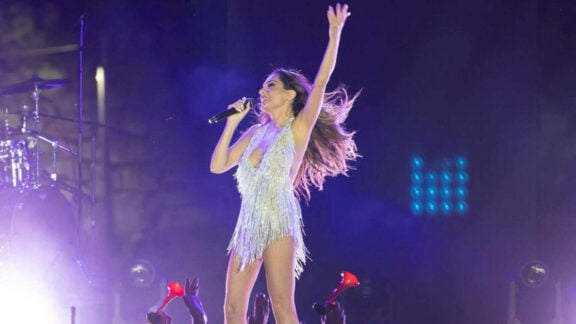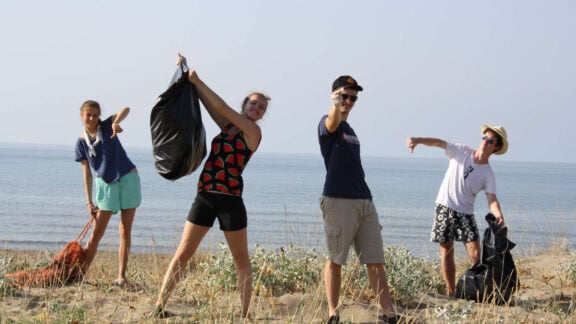Yannis Dramitinos came late and somewhat unwillingly to photography. For a man who had found refuge in words since he was sixteen, photographs were mechanical objects lacking the nuance and subtlety of writing. He needed a job, and the local Greek media needed a photographer. It was a proxy made in heaven.
“I was a literature zealot. I couldn’t fathom another way to tell a story.”
The camera changed that. Through the viewfinder, he found himself witnessing the micro stories that comprise the total of our lives, and eventually, the focus of his photography changed. He became the unseen third, rendered invisible by the camera he held in front of his face, but seeing the unexpected intimacies, burgeoning relationships, and the tiny slights and hurts that usually went unobserved. He was the tall figure roving the event but never part of it—the eternal onlooker.
New horizons
Australia was not on Yannis’ horizon; there was little to bring him here until his partner was offered a position at Sydney University. However, with no defined role of his own, he found himself in a crisis of identity. Who was he in Australia, what was Australia to make of him?
It was only when he encountered C19th Australian writers that he began to find answers. ‘My first friends here were those authors, and when I speak with contemporary Aussies, they find my conversation a little anachronistic sometimes.’
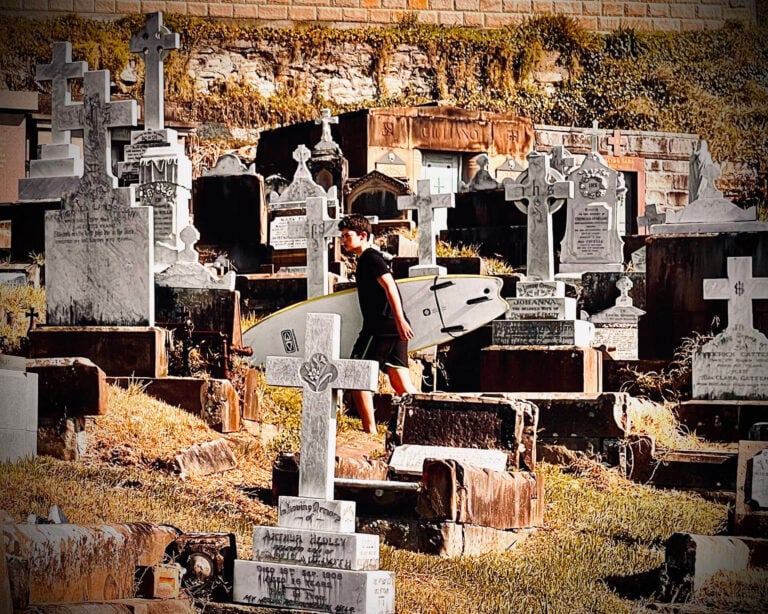
They became his teachers. “It’s like I travelled not in space but in time … ghosts don’t require fluency in English”, but sometimes they led him astray, as he soon found out when an “after thou”, got him a profane and all-too-modern rebuke.
While literature and history eased his way, the landscape linked him to his literary heroes: “Waverly Cemetery, Kendall and Lawson; the Hawkesbury, Robert Adamson; Gippsland, Eve Langley”. A walk from Bondi brought him to Waverly Cemetery, where he found inspiration in a monument to Henry Kendall:
“Here is Lawson, a dipsomaniac,
and Henry Kendall, son of a dipsomaniac mother,
there will be others
whose letters were not answered
this means
beyond fortune everything is brutal
not that there weren’t moments. However,
the blind lottery seller died
before we could check.”
(Translated by Anna Couani)
Witness the difference between an ocean and a sea
It was here that he saw the difference between an ocean and a sea, and he began to reflect on time. “As I got older, I got an accelerated sense of time. Now every second counts, and I can see the seconds as if they have substance.” He looks to the past to find the future and sometimes finds it difficult to distinguish between the two.
His images activate time by filling his huge Sydney skies with the rush of clouds dashing towards the horizon, or creating a shifting palimpsest where a glass interface superimposes a dynamic exterior over a static interior. Neither staged nor structured, his photos reveal what his eye has perceived, combined with what the camera has absorbed, to produce a kaleidoscopic image full of surprises.
A teenager walks through Waverly Cemetery with his surfboard. The raw image is simple, but the coffin shape of the board, in the context of dead grass and broken headstones, suggests that the boy is holding his mortality.
A random series of events
Serendipity, a series of random events evolving into a cohesive narrative, is a major aspect of Yannis’ photography. It is present in a garish plaster statue of the Virgin and Child wrapped in cellophane, or a stone angel, wings in repose, hands held in prayer, confronting three plastic watering cans, red, white, and blue, which face her with the hostility of elderly Daleks, or a crow flying over crumbling headstones.

His portraits, however, are carefully curated. A Cantonese woman, her lined face shaded by a raffia hat, her Tang jacket belying the fact she lives in Redfern, seems strangely unpresent. Milan defiantly displays the crucifix for which he went to war, while Emmanuel faces the camera in joking contemplation of the benefits of sainthood. Will an oversize crucifix seal the deal?
Yannis is currently working on a series about graveyards centred on Waverley Cemetery, where he has often stayed late into the night. It is an extension of On Death, the work he exhibited jointly with Effy Alexakis at the Shop Gallery in Glebe.
“It’s like I travelled not in space but in time … ghosts don’t require fluency in English” Yannis Dramitinos
Supporting it is an evocatively edited video about birds and monuments. To date, he has participated in ten exhibitions, two of which have been solo. Referencing Paul Ricoeur’s statement that monuments are centres for forgetting: that headstones obliterate emotion and negate meaning, he reflects that “metaphorically speaking, the cemetery is just an extension of the ocean, and the ocean is a kind of clock. The voices of the cemetery work like a cuckoo clock.”
Quest for relevance in a new land
His quest for relevance in his new homeland lies at the core of his work. He wants his portion of C19th Australia because “the bush belongs to me as much as it belongs to others… it is my huge effort to rebuild my identity out of local materials.”
To those who suggest that this is simply his need to belong, he responds with an emphatic “No. No one else is interested. It is as if I’m claiming a new space yet to be built.”
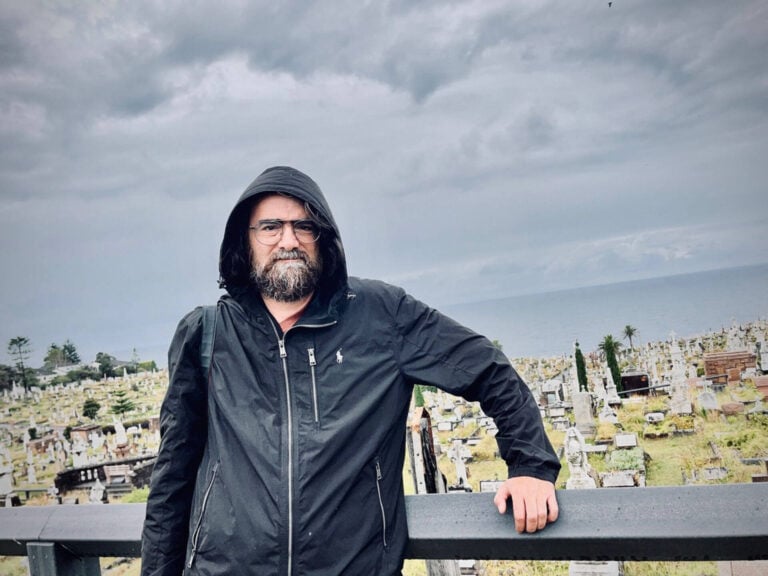
As he roams Sydney documenting its current reality through the lens of the past, he wonders at the locals’ ignorance of their history. “This is the first time I’ve met people who want to escape heaven…because they know nothing of the struggle.”
Yannis Dramitinos is a Sydney-based poet, publisher, and photographer.
*Kiriaki Orfanos is a writer and researcher who regularly contributes to Neos Kosmos on art and travel.
